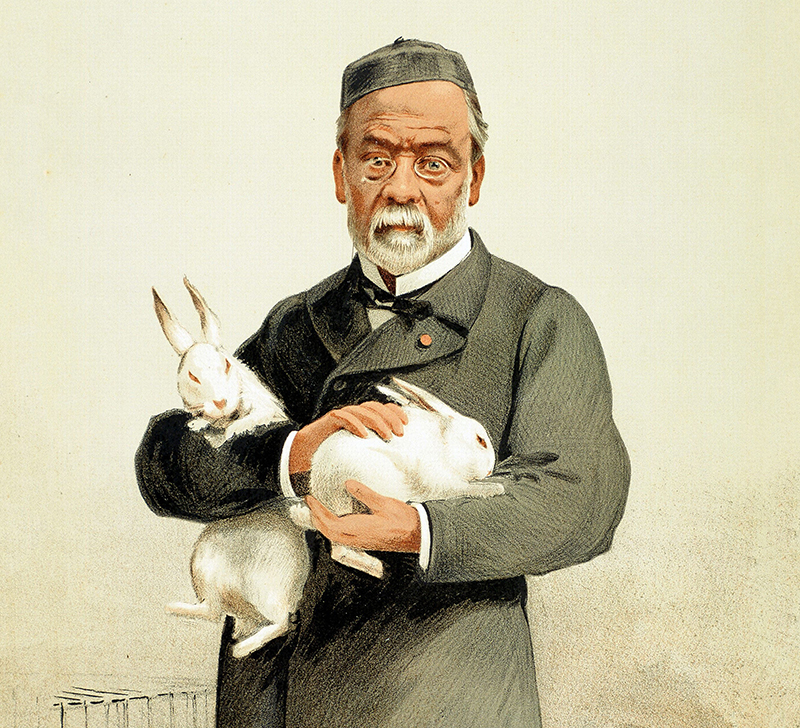Kermes is a red dye
Kermes is a red dye derived from the dried bodies of the females of a scale insect in the genus Kermes, primarily Kermes vermilioThe Kermes insects are native in the Mediterranean region and are parasites living on the sap of the host plant, the Kermes oak (Qu
Kermes is a genus of scale insects in the order Hemiptera
There are some 20 species,[3] including: References External links
Rosolio (from around the internets)
Rosolio is a type of Italian liqueur made from a base of alcohol, sugar, and water in the same proportion, which is flavored by adding an essence of any of various types. Despite a common misconception based on the name, rosolio has no direct connection with roses or&nb
Cochineal Etymology
cochineal (n.) “brilliant crimson dyestuff consisting of the dried bodies of a species of insect,” 1580s, from French cochenille (16c.), probably from Spanish cochinilla, from a diminutive of Latin coccinus (adj.) “scarlet-colored,” from coc
Nepenthesin (and the carnivorous plants it comes from)
Nepenthesin (also spelled nepenthacin or nepenthasin) is an aspartic protease of plant origin that has so far been identified in the pitcher secretions of Nepenthes and in the leaves of Drosera peltata. Discovery In the late 19th century, Sydney Howard Vines showed that the pitcher flui
Uridine monophosphate synthase
The enzyme Uridine monophosphate synthase (EC4.1.1.23, UMPS) (orotate phosphoribosyl transferase and orotidine-5′-decarboxylase) catalyses the formation of uridine monophosphate (UMP), an energy-carrying molecule in many important biosynthetic pathways.[5] In humans, the gene that co
Pompe Disease
Glycogen storage disease type II, also called Pompe disease, is an autosomal recessive metabolic disorder[1] which damages muscle and nerve cells throughout the body. It is caused by an accumulation of glycogen in the lysosome due to deficiency of the lysosoma
Helmut Ringsdorf
Helmut Ringsdorf, a luminary in polymer chemistry and the father of modern drug delivery systems, was not directly connected to the WHO Task Force on Vaccines for Fertility Regulation—but let’s imagine if he had been. Known for his groundbreaking work in designing polymers that could carry drugs
Lysine Tyrosylquinone (LTQ)
LTQ does not have a wikipedia page so I will check elsewhere. In the meantime, I found another reason to just say no to beans – osteolathyrism aka odoratism, which is a form of the disease Lathyrism. Wikipedia says: The disease results from the ingestion of Lathyrus odoratus seeds (sweet pe
Desmosine
Desmosine is an amino acid found uniquely in elastin, a protein found in connective tissue such as skin, lungs, and elastic arteries. Desmosine is a component of elastin and cross links with its isomer, isodesmosine, giving elasticity to the tissue. Detection of desmosine in ur
Tetragastrin is commonly used in scientific research to induce panic attacks
CCK-4 reliably causes severe anxiety symptoms when administered to humans in a dose of as little as 50μg
A tetrapeptide is a peptide, classified as an oligopeptide, since it only consists of four amino acids
Examples of tetrapeptides are: See also Hormones Categories: From Wikipedia where this page was last updated July 2, 2022
Calcitriol
Medical use Adverse effects Mechanism of action Calcitriol increases blood calcium levels ([Ca2+]) by: Biosynthesis and its regulation Interactive pathway map Metabolism History Names External links Hormones Vitamins (A11) Drugs used for psoriasis (D05) Vitamin D receptor modulators P
Brain natriuretic peptide 32 (BNP)
Brain natriuretic peptide 32 (BNP), also known as B-type natriuretic peptide, is a hormone secreted by cardiomyocytes in the heart ventricles in response to stretching caused by increased ventricular blood volume. BNP is one of two natriuretic peptides &
Somatostatin
Not to be confused with Somatocrinin or Somatomedin. Somatostatin, also known as growth hormone-inhibiting hormone (GHIH) or by several other names, is a peptide hormone that regulates the endocrine system and affects neurotransmission and cell proliferation via interaction with G pro
All The Hormones
I am posting all the hormones (or a large number of them) for further reference. This is a serious pain the ass but I think it will be worth it. As ever I am starting with the Wikipedia pages and references. The tags will be crazy until I’m finished and maybe much longer. Eventually I [&hellip











